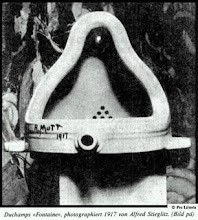The thrust reverser is part of the engine nacelle, shown below (nacelle in red, thrust reverser in
 green). When the airplane is taking off or cruising, thrust needs to be generated 'backwards', in order to propel the plane forwards (physics!); however, upon landing, it's useful to generate thrust in the opposite direction, to slow the plane down. To do this, the thrust reverser separates slightly from the rest of the nacelle, and uses the resulting gap to push air up and towards the front of the plane. The translating sleeve consists of the outer shell of the thrust reverser, an inner "acoustic skin", which is specially treated to reduce noise, and a series of small blocker doors.
green). When the airplane is taking off or cruising, thrust needs to be generated 'backwards', in order to propel the plane forwards (physics!); however, upon landing, it's useful to generate thrust in the opposite direction, to slow the plane down. To do this, the thrust reverser separates slightly from the rest of the nacelle, and uses the resulting gap to push air up and towards the front of the plane. The translating sleeve consists of the outer shell of the thrust reverser, an inner "acoustic skin", which is specially treated to reduce noise, and a series of small blocker doors. Boeing subcontracted the design and construction of the nacelles to Goodrich, which in turn subcontracted the translating sleeves to FACC. Most of the design and analysis is happening out of the Vienna office, and all of the production is in Ried, a smaller city in Austria between Salzburg and Linz. The frantic rescheduling and inevitable delays common to all large aerospace projects eventually resulted in Goodrich sending a small team of Americans to Vienna to "supervise" the design process. This has resulted in some mostly good-natured tension.
So, what do I actually do? I spent most of my first week playing around with the software and trying to convince my supervisors that I really was going to be useful, despite my lack of practial experience with modeling (if you thought explaining EngSci to people was fun without a language barrier...). On Thursday and Friday, though, I managed to do some actual, if extremely simple, work, creating a mesh for the blocker door hinges and running a normal mode analysis.
The work is certainly more interesting than anything I did at Honeywell, and has the added bonus of being based on things that I actually learned at school. Also, I have a nice desk rather than a cramped, shared, overheated conference room, and the office is on the top floor of a gorgeous glass building, directly overlooking the main runway of the Vienna airport.
My direct supervisor, the composites lead for the stress analysis group, is named Ernst. His direct supervisor, the lead of the entire stress analysis group, is also named Ernst. I believe there is at least one other guy named Ernst, whom I haven't met.
There are around 45 people in the Vienna office and, aside from the receptionist, Sandra, I'm the only woman. Fortunately there are three women's washrooms, so I've figured we can each take one and use the third to store our hair products. I'm also the youngest and the only Canadian (though there are several Americans and Brits) so it's fair to say I stick out a bit. This is neither unexpected nor totally disheartening, but it can be a little strange.
The Vienna office employs people from a variety of different countries, including Austria, Germany, Spain, England, Switzerland, France, the U.S., and now Canada. Vienna's diversity in general is a far cry from Toronto's or Vancouver's, but I continue to be astounded by the sheer number of countries represented by my fellow IAESTE trainees. Yesterday, at dinner during the IAESTE Vienna Weekend, I shared a dinner table with people from Austria, Ireland, Norway, England, Australia, Jordan, and Israel.
In addition to those countries, between IAESTE and the hostel where I'm staying, I've met people from Pakistan, Lebanon, Northern Ireland, Mexico, Portugal, Tunisia, Hong Kong, Hungary, India, Egypt, Turkey, Slovenia, the Czech Republic, Russia, Palestine, Italy, France, Lithuania, and Wisconsin. I also met two 0T8 + PEY mechanical engineers from U of T, who remain the only Canadians I've seen. Finally, the prize for the coolest background thus far goes to my new friend Olga, who was born in Jordan to a Russian mother with family from Moldova and a Jordanian father who works in Greece. She speaks English, Arabic, Russian, Greek, French, some Italian and a little Moldovan. Needless to say, I feel like a moron most of the time. I'm grateful at least that I can entertain people with "Canada is kind of wacky" stories ("you call them loonies?").
Speaking of which, I will leave you with a Foreign Currency Fun Fact as a parting note - I recently found out that in Israel, a two-shekel coin is called a 'shnekel', since shnek is similar to the Hebew word for two. Puns and money FTW!

3 comments:
Well, colour me extremely jealous, especially about the overlooking-the-runway bit. Are 0T8+PEYs on short work terms, or did they do their entire PEY there? If the latter, my hate for the PEY Office grows.
Also: "You call them shnekels?!"
Thanks for the laymans terms. My mother will appreciate the longer answer to "So, what is Kari doing" (All I've been able to say is that you're in Vienna, and it's something to do with planes and stuff). Now I can say you're expanding your hair product collection, with lots of thrust.
Paul - they've already finished their PEY terms, thank jeebus (I might have killed them myself). And if it makes you feel any better, my desk doesn't actually face the runway.
Post a Comment